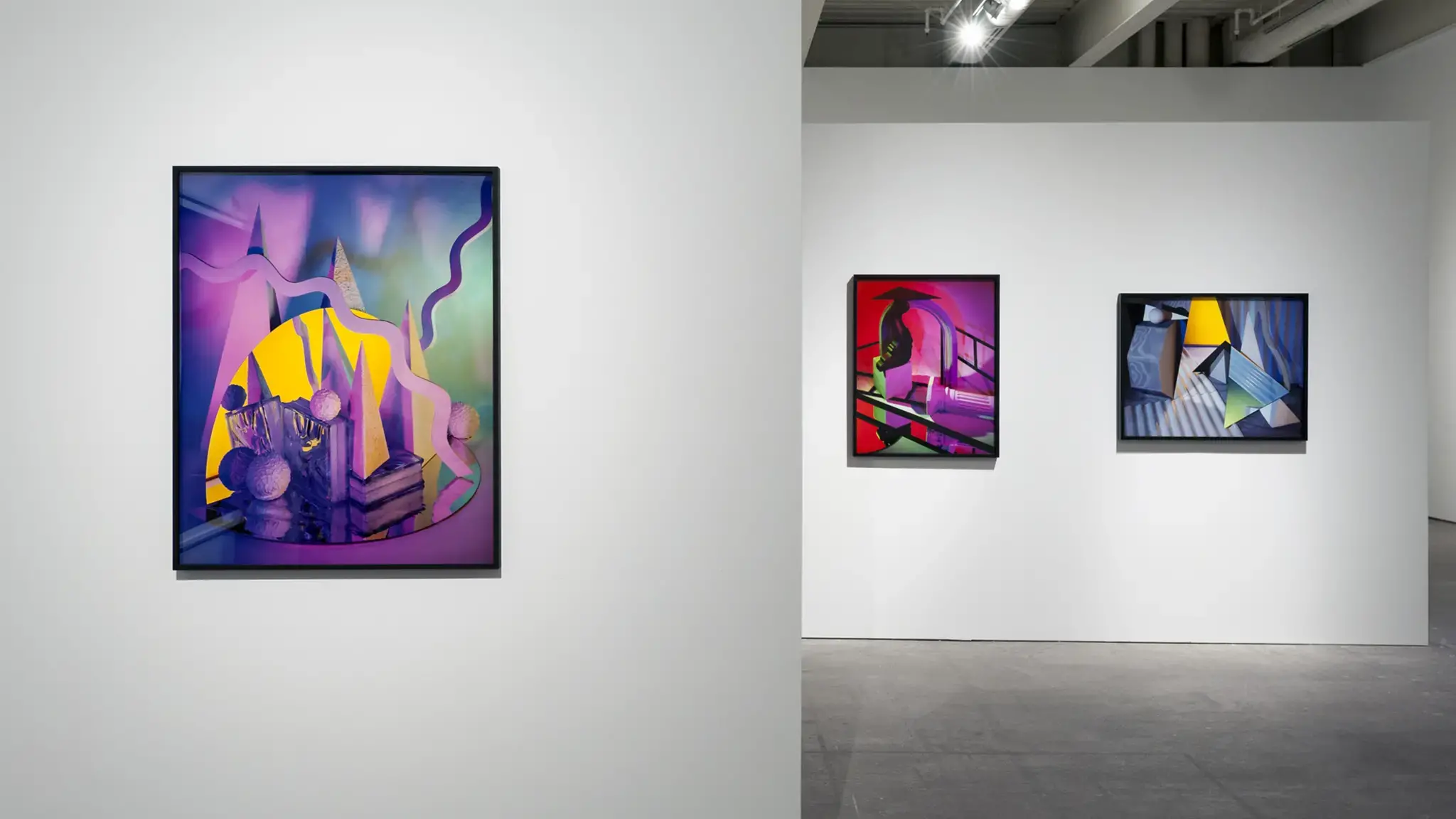

In the publication accompanying the Center-funded Barbara Kasten: Stages, presented at the Institute of Contemporary Art at the University of Pennsylvania, exhibition curator Alex Klein explains the significance of staging and props in Kasten’s work. In the following essay excerpt, Klein highlights the interdisciplinary implications of the artist’s use of sculptural objects. Props, Klein proposes, not only allow the artist “a certain responsiveness and fluidity,” but they “are also essential actors…they signal a relationship to the body: its presence and its ghosting.”
“If theater is often implied in [Barbara Kasten’s] work, it is due in no small part to her engagement with sculptural objects or, “props.” Although the term suggests the artifice of Hollywood and the stage, Kasten’s props are also essential actors. A prop is both a substitute or surrogate and a thing that holds something up; its dual nature is one of both representation and physical support.
Appropriately, the majority of the materials in Kasten’s photographs are literally propped against one another. Although physically precarious, this setup allows the artist a certain responsiveness and fluidity when working with the camera in mind. As she moves through her installations, which are most often scaled to the body, her set pieces must be pliable and permeable so as to permit adjustments and enable the effects created by light, shadow, color, and reflection. These objects are thus always on the cusp of being moved, stacked, rearranged, and projected upon. Their use-value extends beyond the tension between the flat surface of the image and the physical experience of sculpture in-the-round. They signal a relationship to the body: its presence and its ghosting.
The body in motion is also glimpsed in the photo-documentation of Kasten assembling her constructions, or as she calls them, “stage-sets.” Slightly blurred, her figure is caught in a moment of working: unfurling a large roll of fiberglass screening, adjusting tiny wires on a structure, crouching over an object, shifting a Plexiglas shape, casting a shadow, or simply walking by. These images are not of performances per se, but there is no doubt about their performativity and measure of labor. Artist Anthony Pearson, who cites Kasten as an influence, has commented on the importance of this dimension of her process: “The pauses in her work are the photos that she took, so the photograph isn’t a stand-in for an idea. It’s a copy of an activity, or an action, or an experience…I really think of her as an artist in action and not as an artist whose photographs are a final thing.”1 In considering Kasten as an “artist in action,” then, if the photograph is understood as a “copy of an activity,” we might go further and think of the prop as a stand-in for the artist at work, that is as a kind of “body double.”“